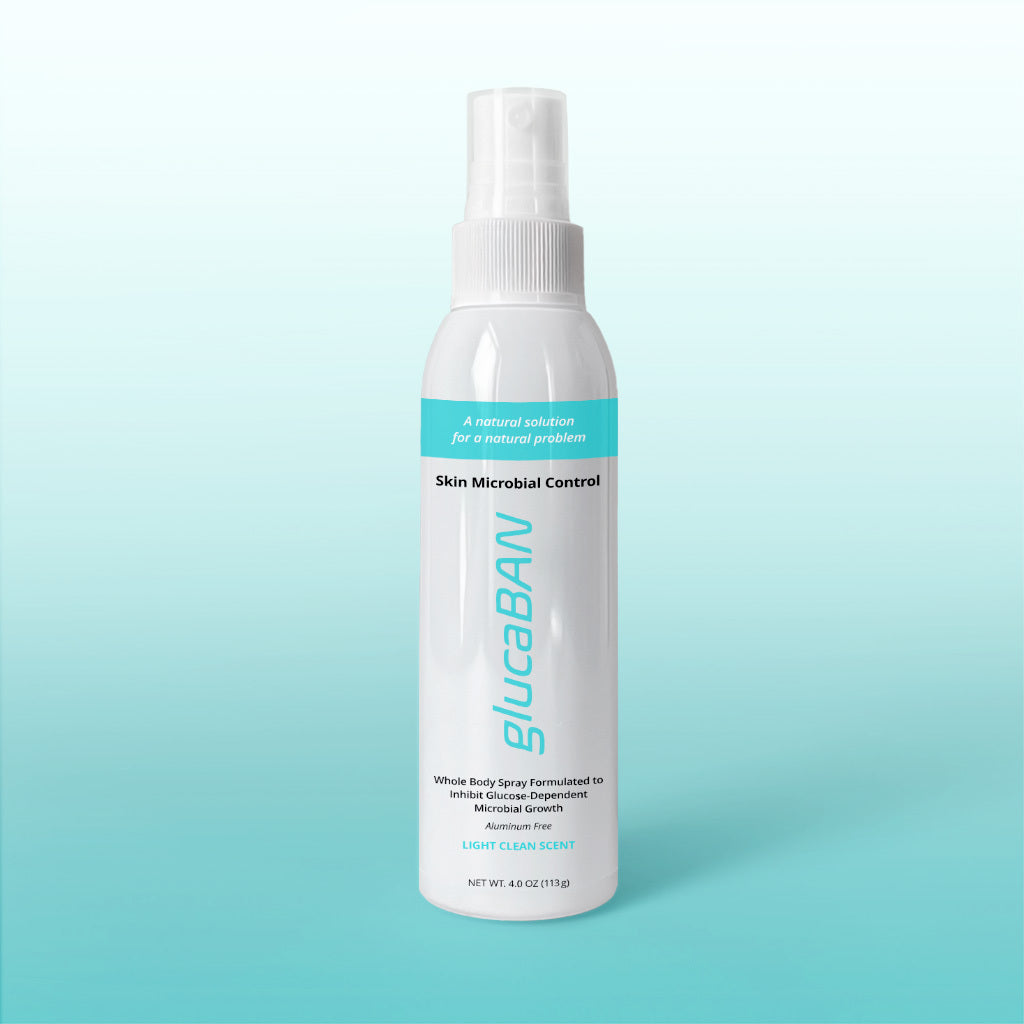
Glucose-Consuming Microbial Control for Skin
Blood sugar (glucose) is both essential for life and dangerous in excess. Outside the blood, for example in urine or sweat, glucose does not appear to provide any benefit, but instead represents a hazard, increasing the risk of infection or other undesirable effects, such as odor or itch.
glucaBAN is formulated to address the risk of infection, odor, and/or itch caused by excreted glucose that is deposited on the skin. SGLT2 inhibitors, a class of drugs that lower blood glucose by causing it to be excreted in urine, can elevate these risks.1 Even for patients not treated with SGLT2 inhibitors, high blood glucose levels from diabetes can result in glucose excretion when the glucose level in blood exceeds the ability of the kidneys to reabsorb it completely.
glucaBAN is designed to be used as an aid to control unwanted microbial growth that results in discomfort or odor. Applied to susceptible body surfaces, such as the underarms, skin folds, groin, and feet, it can provide a targeted mechanism for addressing excess glucose, as well as a high level of protection against microbial growth.

Microbial Control for Skin
Personal Hygiene Formulated to Inhibit Glucose-Dependent Microbial Growth

